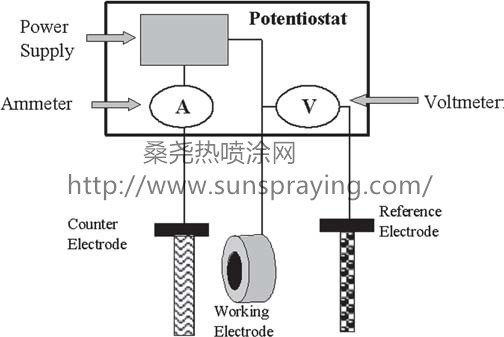Include more applications than the original aerospace market, which dominated their use in the early days of their development. Among different coating processes, high velocity oxy-fuel (HVOF) has been very suitable for a number of applications due to the fact that it can provide coatings with very low porosity (less than 2%) and high wear resistance (Ref 1). The use of HVOF WC-based coatings to improve the lifetime of materials has been very successfully achieved, as for instance,in the internal parts of centrifugal pumps, which in some cases have had their lifetime increased by 600%. Although HVOF WC-based coatings can provide wear resistance in erosion corrosion environments, much is still to be done to understand the material degradation. Souza et al. investigated the effect of corrosion of WC-Co-Cr HVOF coatings in erosioncorrosion environments, and it was reported that corrosion can be a dominating mechanism. In Fig. 1, the components of degradation in an erosion-corrosion environment for WC-Co-Cr HVOF coatings have been categorized as mechanical erosion (E) and corrosion-related damage (C + S), where C is the in situ corrosion rate in erosion-corrosion and S is the effect of corrosion in enhancing the erosion degradation. The segregation of components of damage by this approach has been previously reported for a range of materials in Ref 4-7. The numbers 1, 2, and 3 are related to the sand loading used in the experiment—200, 500, and 1000 mg/l, respectively—whereas the circles are the results at 20 °C and squares at 50 °C. Also, the damage components for UNS S327650 at 20 °C are presented to have a comparison. From this, it is clear that the HVOF coatings in an erosion- corrosion environment are placed near the line separating the corrosion-dominated regimen from the erosion-dominated regimen, and in this respect corrosion is an important issue. Also, there may be applications in which coatings are required to operate in an aqueous environment for long periods, and therefore static corrosion considerations are often vital in material selection. For large particles, it is likely that both the dissolution toward matrix and towards hard phase will take place to a certain degree and then the particle will be removed either by losing support of the matrix or by physical effects of the jet under erosioncorrosion
environments. For very small particles (less than 1μm), the dissolution takes less time to complete and, as seen in post test analysis, the particle can be entirely chemically removed due to the high activity created by the higher surface area of small particles . The reason some authors have detected the oxidation and dissolution of WC and some others did not is still not clear. However the high dislocation density, which can be encountered in HVOF WC-based coatings could perhaps be related to corrosion behavior of the materials as it is in stress cracking corrosion. Another important factor is the preferential corrosion, which seems to take place first in small particles; this could have been formed due to fracture of the relatively large particles upon the impact during the process as reported by Wirojanupatump et al.. In the HVOF process, the particle size distribution can be reduced due to the impact with the substrate increasing their surface area and the chemical activity of the particles. The corrosion of WC-Co-Cr HVOF coatings is very complex and the rate increases with the temperature. WC in HVOF coatings dissolves as well as the cobalt chromium matrix, leading to cobalt in solution. Chromium forms an oxide layer, which protects from dissolution and retards the corrosion. WC and Co go through an oxidation process before dissolution. The oxidation of WC to WO3 makes the pH drop, accelerating the dissolution of cobalt. Where corrosion of hard phase occurs, leading to its removal there are serious implications for when the coatings are used in corrosive-erosive environments.

本文由桑尧热喷涂网收集整理。本站文章未经允许不得转载;如欲转载请注明出处,北京桑尧科技开发有限公司网址:http://www.sunspraying.com/
|

